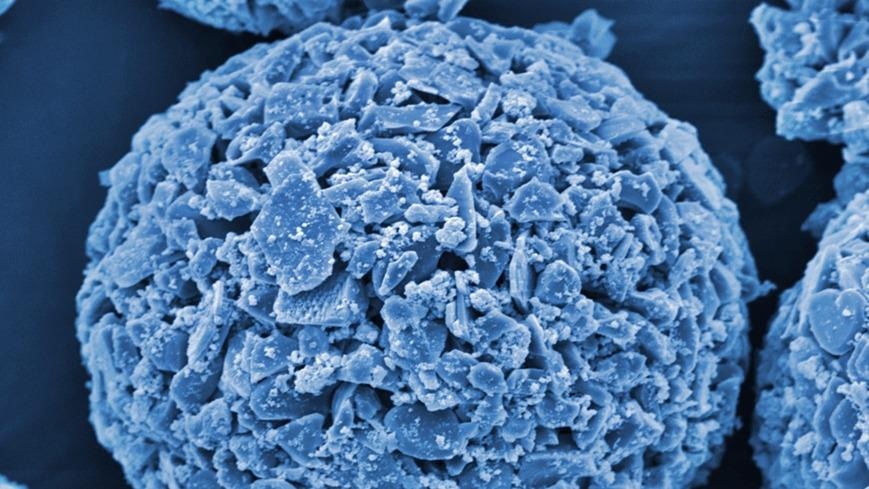Apr 30 2021
Biology teaches us that water is life. But reality teaches something else: Hundreds of thousands of people die every year due to contaminated water containing pathogens in places where there is a lack or poor functioning of water treatment.
 Empa researchers are developing novel filter systems made of composite materials such as ceramic granules with a copper nanocoating as depicted here (electron microscopy, colored). Image Credit: Sena Yüzbasi/Empa.
Empa researchers are developing novel filter systems made of composite materials such as ceramic granules with a copper nanocoating as depicted here (electron microscopy, colored). Image Credit: Sena Yüzbasi/Empa.
To solve this problem completely, clean water availability for the entire humankind is one of the goals mentioned in the United Nations (UN) Global Sustainability Agenda since 2015.
As per this goal, scientists from Empa, together with their collaborators at Eawag, have been designing new materials and technologies to eliminate pathogens from drinking water, which so far could barely be removed with traditional measures, or only with high-cost, complex processes.
Tiny Pathogens
The aim of the researchers is the tiniest of germs: small pathogens that circulate through contaminated water and thus lead to several water-borne diseases like hepatitis, polio, and diarrhea. Rotavirus is one of these pathogens and measures only about 70 nm in size.
“Conventional water filters are ineffective against rotaviruses,” notes Thomas Graule a researcher from Empa’s High Performance Ceramics lab in Dübendorf. But it is exactly these minuscule germs that are the most common pathogens leading to gastrointestinal infections. The World Health Organization (WHO) reported that in 2016, nearly 130,000 children across the world died from rotavirus infections.
Now, the researchers have created several techniques for filtration technologies based on new materials that skillfully overcome the problem of minuteness. The reason is one characteristic of the virus particles can be leveraged for a new kind of filter—the negative electrical charge of the virus particles.
The researchers used this concept and started developing ideal materials that enable the adsorption of negatively charged virus surfaces. So far, it has been challenging to develop easily regenerated positively charged surfaces with high adsorption capacity. Systematic experimental studies in this area have been insufficient.
For their analyses, the researchers hence selected a model virus that is much smaller compared to the rotavirus—the bacteriophage MS2, which has a size of only 27 nm. This virus is harmful to bacteria but does not affect humans.
With the help of this model, the researchers could demonstrate that viruses in water adsorb to the filter surface to different degrees based on the pH of water. “This must be taken into account when developing new water treatment and filter technologies,” added Graule.
Porous Nanocoating
Graule has been investigating composite materials functionalized to specifically bind viruses to create filter technologies with the ability to capture viruses at the nanoscale.
In water, the surface of the virus particles is negatively charged. We were able to show how the virus particles attach themselves to positively charged surfaces.
Thomas Graule, High Performance Ceramics Lab, Empa
For instance, Graule has been working with an international team to study ceramic granules made of aluminum oxide, the fine granules of which are coated with nanometer-thin layers of copper oxide.
Together with the ceramic, the highly porous copper layer forms a composite material with a positively charged and immensely large specific surface,” says Graule.
Thomas Graule, High Performance Ceramics Lab, Empa
The researchers could coat copper oxide on tiny multi-layer carbon nanotubes, thereby allowing the removal of viruses.
To create a sustainable, economical filter technology, the team specifically used materials that are recoverable after use in the sense of a closed material cycle.
Moreover, it is crucial to prevent any filter components from being washed out into the purified water. For this purpose, analytical techniques to ensure nano-safety should still be developed to help determine the most appropriate composite material.
It is expected that when this study concludes, a filter technology also ideal for water treatment in developing countries, with their specifically high numbers of rotavirus and other water-borne diseases, will be available.